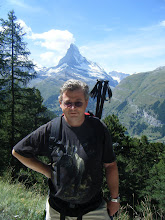Down the years, in my various roles in the EU and now in WWF, I have had a lot of dealings with representatives of the German Government. They have a high standard of achievement in terms of their scientific, legal and enforcement expertise on wildlife trade matters and I always listen to what they have to say.
Most but not all of my colleagues were already working for the West German Government in the pre-unification days. After unification, the Government acquired a whole new batch of civil servants from the former German Democratic Republic (East Germany).
One has to sympathise with the latter. They were treated as second-division players from day one. The former West Germans would often sneer about them (and still do, behind their backs, of course), caricaturing them as plodding pedants with too much focus on petty details and a complete inability to see the wider picture.
Like all caricatures, this one is cruel and simplistic but it also has a grain of truth. The fact was that they came from a culture that didn't encourage independent or creative thinking (to put it mildly!). So the only way for them to be conscientious was to absorb themselves in detail, to the point that they became pettifogging bureaucrats.
In many way, however, Angela Merkel, herself a former citizen of the DDR, is the archetype of this caricature. It is not surprising, therefore, that her response to the Euro crisis has been plodding; too little to late. One wonders what the giants of German leadership - men like Konrad Adenauer, Willi Brandt or even Helmut Kohl, would have done in similar circumstances (and I don't choose three men all of whom I agree with on everything but three who were men of stature).
Merkel's response, however, was the fiscal treaty. Having press-ganged the shallow-minded and narcissistic (and now former) President Sarkozy into going along with it, the two then tried to impose it on the rest of Europe.
In the context of a single currency, there is nothing wrong in principle with imposing strict disciplines on member States. In fact, such rules have been in place all along but it is instructive that Germany and France were the first to break them. When that happened, however, the EU collectively were too timid to take those countries to court.
On the other hand, the countries that are most in trouble now never showed on the radar of the fiscal rules and, were the situation to re-occur now they still would not show. Ireland is the clasic example. Despite profligate spending by individuals - borrowing not only for their homes but for second homes, new cars, furniture, holidays and other consumer products (mostly imported, with consequences for the balance of payments) Ireland appeared all along to meet the criteria. In fact, there was a black hole of debt but it was below-the-line private debt, fuelled by cheap and reckless lending of surplus funds from
German banks.
The treaty fails to address the deep structural imbalances created by the Euro, and the role that Germany played in the melt-down. It is born of the unwillingness of that country to accept any responsibility
for that role.
In short, it is the timid, pedantic response one would expect from a stereotypic DDR official.































